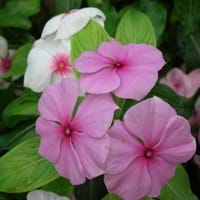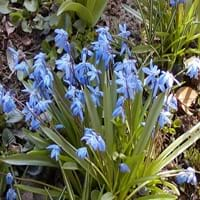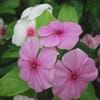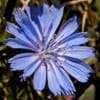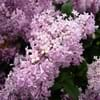Life Span
Perennial
Perennial
Type
Flowering Plants, Shrubs
Bulb or Corm or Tuber
Origin
Madagascar
Europe, South Africa, Asia
Types
Purple vinca, Vinca, cherry red, strawberry color
Scilla Siberica, Scilla Bifolia, Scilla Peruviana
Habitat
Subtropical climates, Tropical regions
Cultivated Beds, Woodland Garden
USDA Hardiness Zone
4-9
2-8
AHS Heat Zone
12-1
Not Available
Sunset Zone
A1, A2, A3, H1, H2, 1a, 1b, 2a, 2b, 3a, 3b, 4, 5, 6, 7, 8, 9, 10, 11, 12, 13, 14, 15, 16, 17, 18, 19, 20, 21, 22, 23, 24
21,22
Habit
Clump-Forming
Clump-Forming
Minimum Height
Not Available
Minimum Width
Not Available
Flower Color
Magenta, Pink, Rose
White, Blue, Purple, Pink, Violet
Flower Color Modifier
Not Available
Bicolor
Fruit Color
Not Available
Not Available
Leaf Color in Spring
Dark Green
Not Available
Leaf Color in Summer
Dark Green
Light Green
Leaf Color in Fall
Dark Green
Several shades of Green
Leaf Color in Winter
Dark Green
Light Green
Leaf Shape
Oval
Lance shaped
Plant Season
Fall, Spring, Summer, Winter
Not Available
Sunlight
Partial shade
Full Sun, Partial Sun, Partial shade
Growth Rate
Fast
Not Available
Type of Soil
Loamy, Sandy, Well drained
Not Available
The pH of Soil
Neutral, Slightly Alkaline
Not Available
Soil Drainage
Well drained
Not Available
Bloom Time
Fall, Spring, Summer
Not Available
Tolerances
Drought, Pollution, Salt
Drought
Where to Plant?
Container, Ground, Pot
Container, Ground, Pot
How to Plant?
Seedlings, Stem Planting, Transplanting
From bulbs
Plant Maintenance
Medium
Medium
Watering Requirements
Does not require lot of watering, Medium
Requires regular watering
In Summer
Lots of watering
Lots of watering
In Spring
Moderate
Moderate
In Winter
Average Water
Average Water
Soil pH
Neutral, Slightly Alkaline
Not Available
Soil Type
Loamy, Sandy, Well drained
Not Available
Soil Drainage Capacity
Well drained
Not Available
Sun Exposure
Partial shade
Full Sun, Partial Sun, Partial shade
Pruning
Prune ocassionally
No pruning needed
Fertilizers
All-Purpose Liquid Fertilizer
5-10-10 fertilizer
Pests and Diseases
Botrytis Blight, Canker, Crown rot, Pythium rot, Root rot
Crown rot
Plant Tolerance
Drought
Drought
Flower Petal Number
Single
Single
Foliage Texture
Medium
Medium
Foliage Sheen
Glossy
Matte
Invasive
Sometimes
Not Available
Self-Sowing
Yes
Not Available
Attracts
Butterflies
Birds
Allergy
Intestinal gas, Nausea, Vomiting
convulsions, Vomiting
Aesthetic Uses
Beautification, Showy Purposes
Ground Cover
Beauty Benefits
Not Available
Removes dandruff
Environmental Uses
Air purification
Air purification
Medicinal Uses
Chest pain, High blood pressure, Inflammation, Sore throat, Tooth ache, Wounds
Antiasthamatic, Bronchitis, Lung Problems
Part of Plant Used
Whole plant
Leaves, Root
Other Uses
Decoration Purposes, Showy Purposes, Used as Ornamental plant
Used as a rodenticide, Used to make hair tonic
Used As Indoor Plant
Yes
Yes
Used As Outdoor Plant
Yes
Yes
Garden Design
Bedding Plant, Container, Edging
Container, Mixed Border, Rock Garden / Wall, Wildflower
Botanical Name
Catharanthus roseus
SCILLA
Common Name
Madagascar periwinkle or rosy periwinkle
Squill
In Hindi
Periwinkle
Squill
In German
Immergrün
Squill
In French
Pervenche
Squille
In Greek
μυρτιά
σκιλοκρόμμυδο
In Polish
Barwinek
Cebulica
In Latin
Periwinkle
Scilla
Phylum
Mollusca
Magnoliophyta
Class
Gastropoda
Lilopsida
Order
Geraniales
Liliales
Family
Apocynaceae
Liliaceae
Genus
Catharanthus
Scilla
Clade
Not Available
Angiosperms, Monocots
Tribe
Not Available
Hyacintheae
Subfamily
Not Available
Scilloideae
Importance of Periwinkle and Squill
Want to have the most appropriate plant for your garden? You might want to know the importance of Periwinkle and Squill. Basically, these two plants vary in many aspects. Compare Periwinkle and Squill as they differ in many characteristics such as their life, care, benefits, facts, etc. Every gardener must at least have the slightest clue about the plants he wants to plant in his garden. Compare their benefits, which differ in many ways like facts and uses. The medicinal use of Periwinkle is Chest pain, High blood pressure, Inflammation, Sore throat, Tooth ache and Wounds whereas of Squill is Antiasthamatic, Bronchitis and Lung Problems. Periwinkle has beauty benefits as follows: Not Available while Squill has beauty benefits as follows: Not Available.
Compare Facts of Periwinkle vs Squill
How to choose the best garden plant for your garden depending upon its facts? Here garden plant comparison will help you to solve this query. Compare the facts of Periwinkle vs Squill and know which one to choose. As garden plants have benefits and other uses, allergy is also a major drawback of plants for some people. Allergic reactions of Periwinkle are Intestinal gas, Nausea and Vomiting whereas of Squill have convulsions and Vomiting respectively. Having a fruit bearing plant in your garden can be a plus point of your garden. Periwinkle has no showy fruits and Squill has no showy fruits. Also Periwinkle is flowering and Squill is not flowering . You can compare Periwinkle and Squill facts and facts of other plants too.
